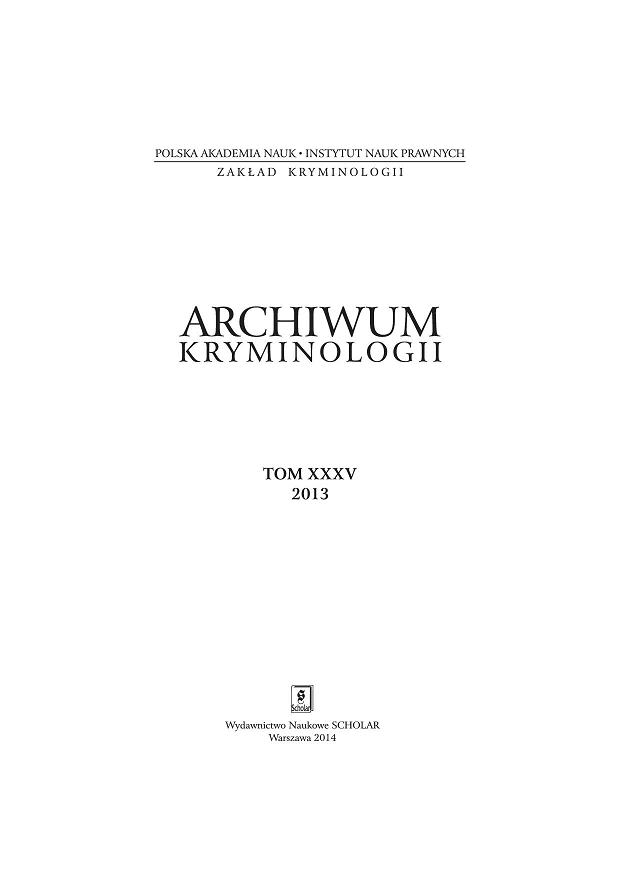O kontroli chuligaństwa futbolowego w Polsce ze szczególnym uwzględnieniem sytuacyjnej prewencji uwag kilka
On football hooliganism control in Poland with several comments of situational prevention
Author(s): Edyta DrzazgaSubject(s): Law, Constitution, Jurisprudence
Published by: Instytut Nauk Prawnych PAN
Keywords: FOOTBALL HOOLIGANISM CONTROL; SITUATIONAL PREVENTION;
Summary/Abstract: The development of international measures of football hooliganism control has been proceeding along several paths and included a number of different aspects of broadly understood control over the phenomenon. One can define 4 periods differing in the football hooliganism control paradigms applied: the first period - stretching from 1960s to 1985, second - between 1985 and 1997, third - 1997 to 2000 and fourth - from 2000 up to the present day. Consider-ing the issue of situational prevention of football hooliganism, control measures could be divided into two groups, or levels. The first level was mostly concerned with 'hard' means, i.e. such based on activities that rendered breaking the law or upsetting the public order more challenging. This was done with simple techniques of isolating opposing groups of supporters from each other by police cordons, fencing out sections of stadiums, putting up barriers, or 'cages' for visiting fans. Other popular 'hard' means aimed at increasing the perpetrator's risk of being subject to negative consequences, which mostly meant intensified police presence at a stadium. The progression to level 2 control was triggered by results brought by research on crowd management techniques conducted after the 2000 European Championship. The new trend involved gradual balancing out the 'hard' and 'soft' means, the latter having the purpose of limiting provocation and excuses (promoting the atmosphere of a joyful festival at football events, avoiding 'arming' and confrontation by security personnel, employment of surveillance and emergency services, etc.). A comparison of the ways in which football hooliganism situational prevention developed with the integrated model of situational crime prevention brings an interesting insight into the effectiveness of the new situational trend, which is a method broadly employed in Western Europe to counter football hooliganism. According to R. Wortley, while the notion of opportunity reduction assumes that there already is an offender who is motivated or at least ambivalent and ready to commit a crime, the fact is that motivation to commit a crime may occur as a result of particular situational factors. Wortley defined 4 types of factors motivating a perpetrator to commit a crime, or the so-called precipitators: prompts, pressures, permissibility, and provocations. The integrated concept of situational prevention discussed in the article is a merger of the traditional methods of limiting crime opportunities, or the so-called 'hard' means, with a complementary set of techniques minimizing other situational factors proposed by R. Wortley, i.e. 'soft' means. D.B. Cornish and R.V. Clarke proposed a combination of the two approaches, which resulted in vastly broadened array of situational crime prevention techniques.
Journal: Archiwum Kryminologii
- Issue Year: 2013
- Issue No: XXXV
- Page Range: 193-212
- Page Count: 20
- Language: Polish

